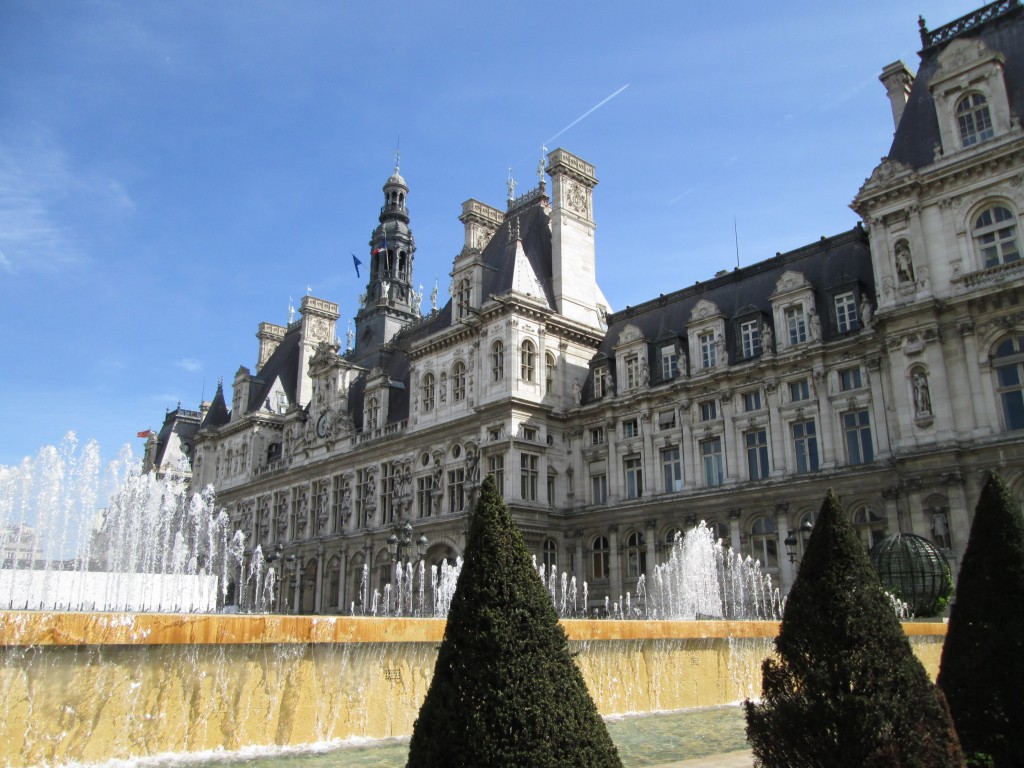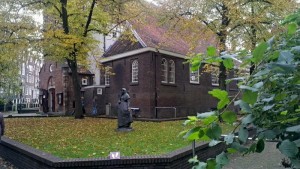5am, coming in to land at Paris Charles de Gaulle Airport. Paris. I try to remember what I know about Paris. Beyond the fairytale romantic city, it’s not much. Charles De Gaulle turns out to be a rabbit warren of an airport – up escalators, down stairs, airport-train then suddenly, unexpectedly, customs. I pass smoothly, easily into France. Luggage in tow, I change into something a little warmer and head towards the Metro station. The airport isn’t hugely well sign-posted. Nor is the Metro. I eventually manage to figure out enough to buy a ticket. I have no French and early in the morning in a new country, I’m not feeling particularly confident.
Luckily I have directions. A pleasant train trip with just one change to the Bastille Metro station. I proceeded to get lost trying to find my exit. Rabbit-warren transport hubs appear to be a theme in Paris.
I walk out of the subway Metro into an overcast morning. I’m glad of my coat. I’m standing at an intersection. In the centre, on a traffic island, is a tall tower, topped with a winged, golden statue (Colonne de Juillet at Place de la Bastille – a monument to those killed in the July Revolution of 1830 and possibly others). A lovely landmark to navigate by.
I sit at a café near the Metro exit and order a café au lait. The waiter, thankfully, understands English and asks if I’d like a croissant with that. It’s 8am. I’m sitting in a cafe in Paris eating an excellent croissant, drinking hot coffee and people-watching. I wish I could describe the people. There were so many, in suits and coats and scarves and boots. Carrying cups of coffee and smoking cigarettes. Riding scooters and skateboards. Reading papers.
After a second coffee and a look at my guidebook, I head off to my hotel in the hopes of dropping off my bag. It’s still far too early for check-in but the person at the hotel reception takes pity on me (I later discover his family is originally from Senegal). I check in and go up a winding, narrow staircase to my room. The room looks out towards the back of the house, across rooftops and towards storey upon storey of old flats with wide, bay-windows, geraniums in pots and bicycles leaning against wooden doors.
The urge to collapse on my bed and fall asleep is powerful but I resist and instead pack the essentials into my daypack and set off exploring. The morning mist had burnt off and the sun is beginning to come out. I retrace my steps and then head across the intersection past the stunning Opera Bastille. A big sign advertises Bellini’s The Capulets and the Montagues. Sadly the dates are much later in April.
With a vague notion of heading towards the Eiffel Tower (because even one day in Paris should include a visit to its most famous landmark), I wander along the right bank of the canal (which I later discover is a marina). On the other side, trees are in full, pink blossom. Across a bridge, across a road, I catch a glimpse of a sign to the Notre Dame. As I am about to head in that direction, I noticed gardens up ahead. There is something special about gardens. I wander in.
I’ve accidentally found the Jardin des Plantes (a 24 hectare botanical garden). Did I mention it was spring? Rows and lines of flower-beds stretch away, bright with flowers of every colour, from tulips to poppies and daisies to lilac. The air is rich with the scent of flowers. I wander between the beds and stroll along tree-shaded avenues. Laughing children toss pink cherry-blossoms into the air, creating a snow of colour. On a bench, a woman sits, enjoying the sunshine and reading a book. Nearby, couple reads poetry to each other. I twist in and around, past greenhouses and signs showing the way to the Menagerie. Statues and old buildings sit amongst the trees and bushes. People sit sketching flowers and shuttered windows. It’s delightful – if I don’t leave now, I may never leave. I find an archway beneath a building and step out into the street, struggling for a moment with the idea that the last half-hour was real.
Up the road past university buildings, tripping through lilac blossoms scattered on the pavement, I reach the left bank of the Seine and head, again, in the direction of the Notre Dame. There are bits of Paris that are not pretty and romantic. I’m walking past university buildings and graffiti on the street. It’s gritty and real. This is why I walk – to see more than just the sanitised bits. Yet the river still sparkles and the trees rise gracefully. On the next corner I reach the Institut du Monde Arabe, where they are displaying the Orient Express. A modern glass and steel building, so different to most of the area around the river, but displaying an old, classic train.
I cross another of the beautiful bridges and find, half-way across, a clear view of the Notre Dame. I turn left and walk along the edge of the island, enjoying the pretty old multi-story buildings as I walk by; buildings that could come from novels and stories with their double-doors and their balconies and their attic rooms, with flowers growing in pots. As I reach the end of the island and prepare to cross to the next, a man is playing an accordion across the road from the Notre Dame and somewhere in the distance church bells are ringing noon, filling the air with the mingled sounds of the romantic accordion and the classic church-bells. The sounds of Paris.
The sun is shining and there is a gentle breeze scattering blossoms as I walk into the grounds of the Notre Dame. The Cathedral is stunning, from its gothic lines and gargoyles to its spring flowers and rose windows. I walked right around it, wanting to see it from every angle. I don’t try and go in – there isn’t time on this day but also the queues are ridiculous. As I pass the western end of the cathedral, with its majestic square towers, and walk towards the Charlemagne Memorial, the bells ring out from the towers above me. Behind me, birds are singing soaring melodies from the trees. I can only relish the moment. A little further along the side of the cathedral, pink and white blossoms artistically complement the grey stone.
By this stage, I have been won over by Paris, completely against my better judgement, and given up being sceptical of the clichés I seem to be walking through. As someone pointed out when I described the day, you reach the point where you have to wonder who is stage-managing this experience.
I cross the river, enjoying the relative quiet of side-streets after the tourist-crush at the Notre Dame. Across the river I find probably my favourite building in Paris, the Hôtel De Ville. Hôtel De Ville is the city hall of Paris. It is a vast, beautiful building, rebuilt, according to my guidebook, between 1874 and 1882 in neo-Renaissance style and decorated with 108 statues of notable Parisians around the outside. I stand on the square looking up at this incredible facade, with its statues, and right above me, below the clock, the words “Liberté. Egalite. Fraternité.”.

